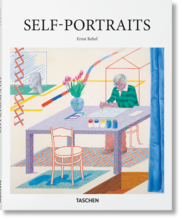More about Diego Velázquez
- All
- Info
- Shop

Contributor
Diego Velázquez caused a scene in 17th century Spanish Art by using live models instead of the practice books and because he didn't just do a million paintings of Jesus.
His teacher, Francisco Pacheco, didn’t seem to mind that his student was a bit rebellious. He allowed Velázquez to marry his daughter, Juana, and introduced him to his future employer for life. He was only 24 when he painted his first portrait of Phillip IV. It was so well received he immediately landed a title as court painter and moved up the ranks, becoming bros with Phillip and Phillip’s main minister man, Count Duke of Olivares – who might have ran the country for Phillip Dick Cheney style. Velázquez was lucky to be so close to these guys, he actually got a paycheck for painting, unlike most. So while Velázquez was OCD about detail and life-likeness, he also wanted to keep his job. The Royals weren't the most attractive bunch - interbreeding isn’t good for any species. What Photoshop and filters do nowadays Velázquez had a knack for back then, softening their less comely features and using light to mask any extra parts.
He became part of the Santiago Order, an order of old Christianity that once protected the pilgrimage road in the north and fought during the Reconquista of Spain from the Moors. To be a part of it, one had to prove you are from a noble family on both sides and be “clean” of Jewish and Moorish blood. Most Spaniards south of Madrid can’t claim this – the Moors occupied southern Spain for nearly 800 years. Secondly, you have to prove that you've never had a menial occupation or practiced a craft (ahem, like painting). Luckily, all 140-something witnesses, including a priest, lied their asses off to get Velázquez what he wanted. The King even pulled some strings with Pope Alexander VII to let the whole bit about nobility on Velázquez's mother's side go when insufficient proof was submitted.
Velázquez became sick while decorating for Margaret Theresa's marriage to The Sun King Louis XIV and died of a fever, to be followed by his wife only 8 days later. They're buried romantically side by side in San Juan Baptista. Unfortunately, when that short dude invaded and trampled Madrid in 1811, the church was destroyed. His skeletal whereabouts are unknown and the loss ia a source of great national sadness.

Featured Books & Academic Sources
The following passage is from "Velazquez" by S.L. Bensusan, published in 1907:
In dealing with the life and work of the Spanish master, even in the modest fashion of this little monograph, one must bear in mind the fact that Velazquez, in the eyes of his contemporaries, was not only an artist—he was a court painter; and pictures other than portraits were of comparatively little importance to Philip IV. and his circle. Art borrowed most of her importance in sixteenth and seventeenth century Spain from the fact that she was the handmaid of Holy Mother Church. Velazquez was a court official who chanced to be a clever portrait-painter, and his promotion tended ever to take him further away from his art. With the increase of state duties the claims upon his time grew more and more difficult to meet, and, when he rose in the closing years of his life to be Grand Marshal of the Palace, entrusted with the ordering of state functions and missions to distinguished foreigners, his art became entirely a secondary consideration. The studio was no more than a place of refuge for the artist in the hours when he might forget that he was an official. If Velazquez had not been compelled to sacrifice the best part of forty years' activity to the ridiculous formalities of court life, the world might have been richer to-day by scores of pictures worthy to rank by the side of "Las Meniñas" and the portrait of Pope Innocent X. The painter might have found outside court circles far more inspiring sitters than those whom he was compelled to paint, for it takes all that even a Velazquez can give to a portrait to make a Philip IV., a Mariana of Austria, or even an Isabella of Bourbon, reveal their dominant characteristics without caricature; indeed one feels that the interest belongs to the picture and not to the sitter. The success is one of tone, of harmony and of line, of sure handling directed by an inward vision.
Because of gifts lying beyond praise, the painter has preserved seventeenth-century Spain for us as far as court circles represent it; but among the many charges laid to the account of Philip IV. must be added that of limiting the range and crippling the capacity of an artist who cannot be placed second to any man.
When we come to analyse his work we find that its qualities are not of a sensational kind. Velazquez makes no appeal through the medium of brilliant pigment; his great contemporary Rubens used colour in far more striking fashion. Velazquez loved grey and silvery tints, and in the years of his maturity understood relative values perfectly. He knew, too, exactly how far he could go, and never made experiments in search of qualities that were not his. Although he had a certain quality of delicate imagination, he was a realist, and could not paint without a model; he never acquired a mannerism, or applied to one sitter the treatment that some artists seem to keep for types. Every figure he set upon canvas has its own individuality, and, while Velazquez, like other artists, had manners and methods that belong to fixed periods of his life, it is not easy to set down in cold print an analysis of the causes that make up his effects. He had no tricks; everything that he did was clear, simple, and withal inimitable. Hundreds of men have copied his pictures; none has been able to copy his method. With his death his influence upon art ceased. His genius lay buried in the grave with him, and did not suffer complete resurrection until the nineteenth century was turning towards its successor, though Raphael Mengs had done all he could to make his merits known a hundred years before. Even to-day, we may be said to be in the first stage of our enjoyment of the master's work. There are at least fifty good books upon the subject of Velazquez' life and art, written in three or four languages, and all published in the last half century; there must be many more to come, for every generation sees genius in the light of its own time.
So much for literature. In art the painter has influenced very many moderns. Manet, Courbet, Corot, Millet, Whistler, are among the men whose work shines in the light of the Prado, and the list might be prolonged indefinitely, for all earnest art workers go to Velazquez, confident that whatever their aims and ideals, he will confirm and strengthen what is best in them. They know, too, that they may return again and again, and that the rich stores of guidance and encouragement in the pursuit of ideals are as inexhaustible as the barrel of meal that did not waste, and the cruse of oil that did not fail, in the house of the widow of Zarephath.
Sources
- S.L. Bensusan, Velazquez (London: T. C. & E. C. JACK, 1907), Part I
Featured Content
Here is what Wikipedia says about Diego Velázquez
Diego Rodríguez de Silva y Velázquez (baptised 6 June 1599 – 6 August 1660) was a Spanish painter, the leading artist in the court of King Philip IV of Spain and Portugal, and of the Spanish Golden Age. He is generally considered one of the greatest artists in the history of Western art.
He was an individualistic artist of the Baroque period (c. 1600–1750). He began to paint in a precise tenebrist style, later developing a freer manner characterized by bold brushwork. In addition to numerous renditions of scenes of historical and cultural significance, he painted scores of portraits of the Spanish royal family and commoners, culminating in his masterpiece Las Meninas (1656).
Velázquez's paintings became a model for 19th century realist and impressionist painters. In the 20th century, artists such as Pablo Picasso, Salvador Dalí, and Francis Bacon paid tribute to Velázquez by re-interpreting some of his most iconic images.
Most of his work entered the Spanish royal collection, and by far the best collection is in the Museo del Prado in Madrid, although some portraits were sent abroad as diplomatic gifts, especially to the Austrian Habsburgs.
Check out the full Wikipedia article about Diego Velázquez
























